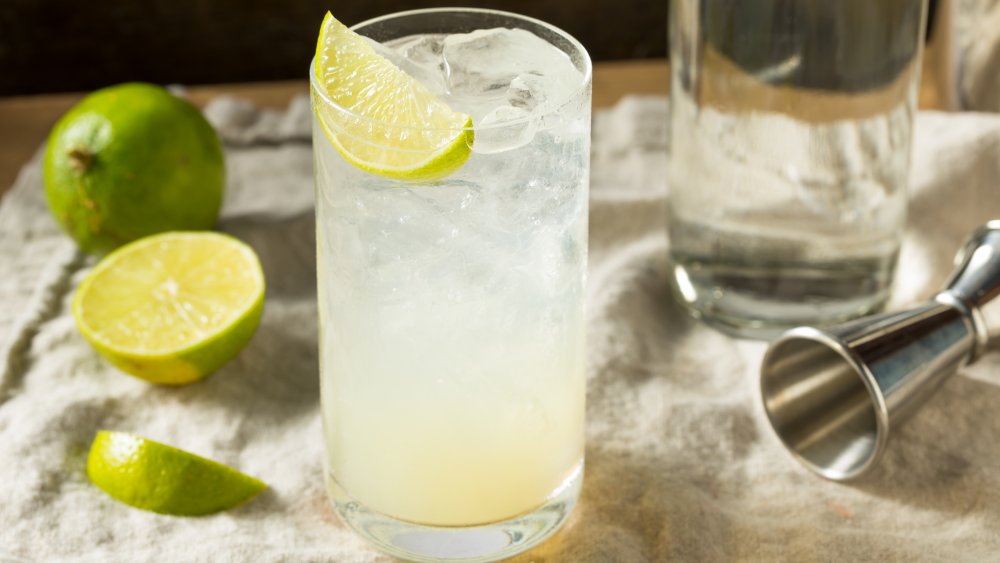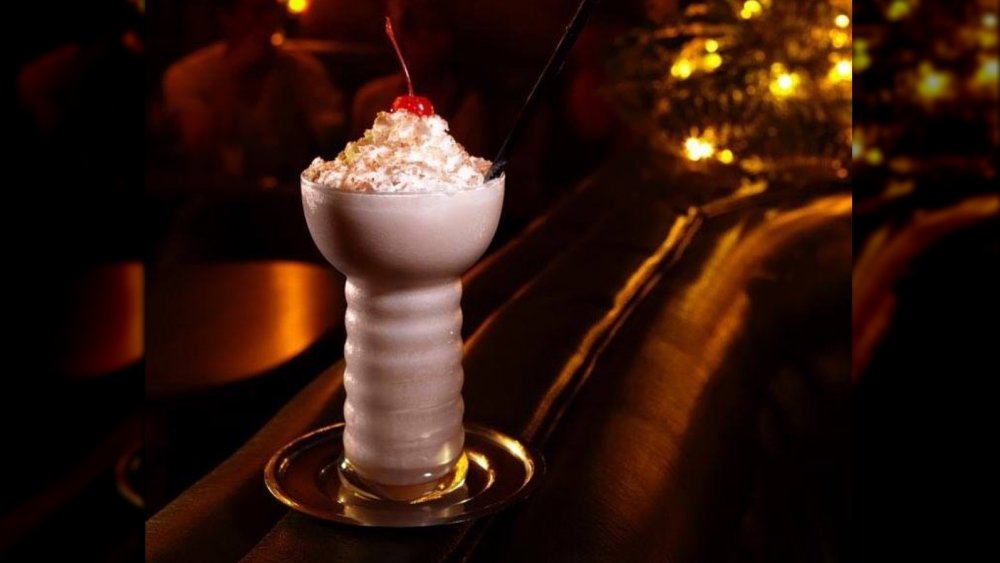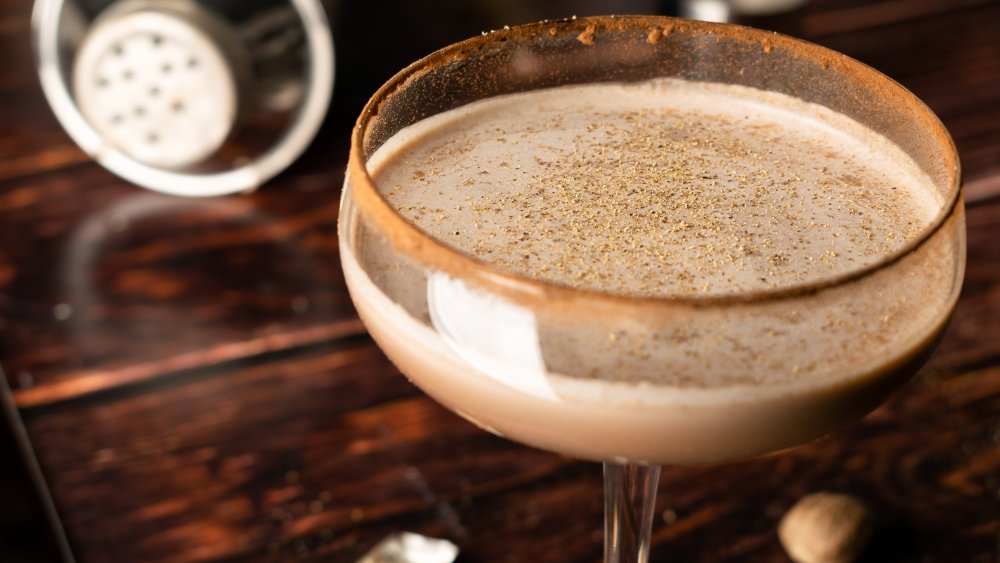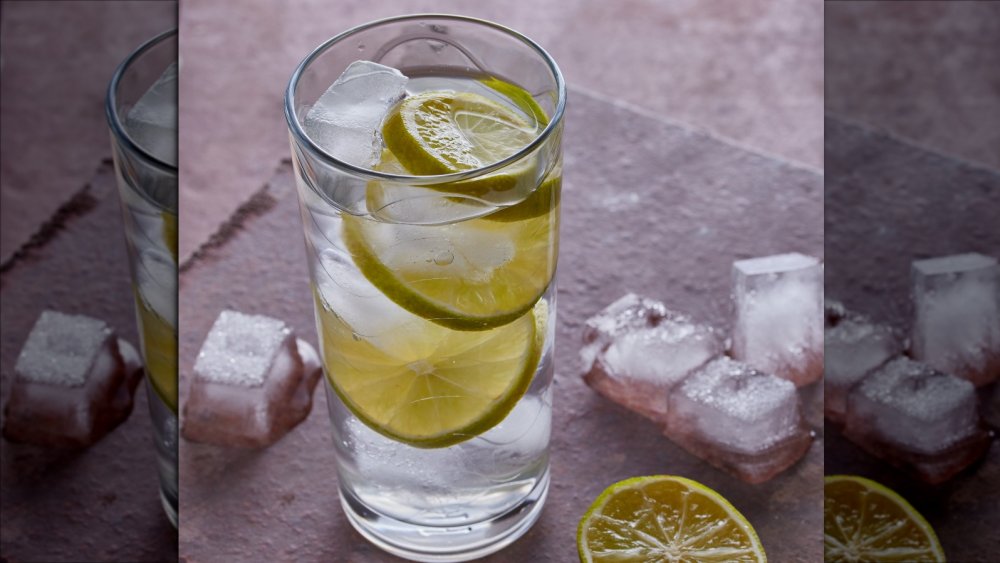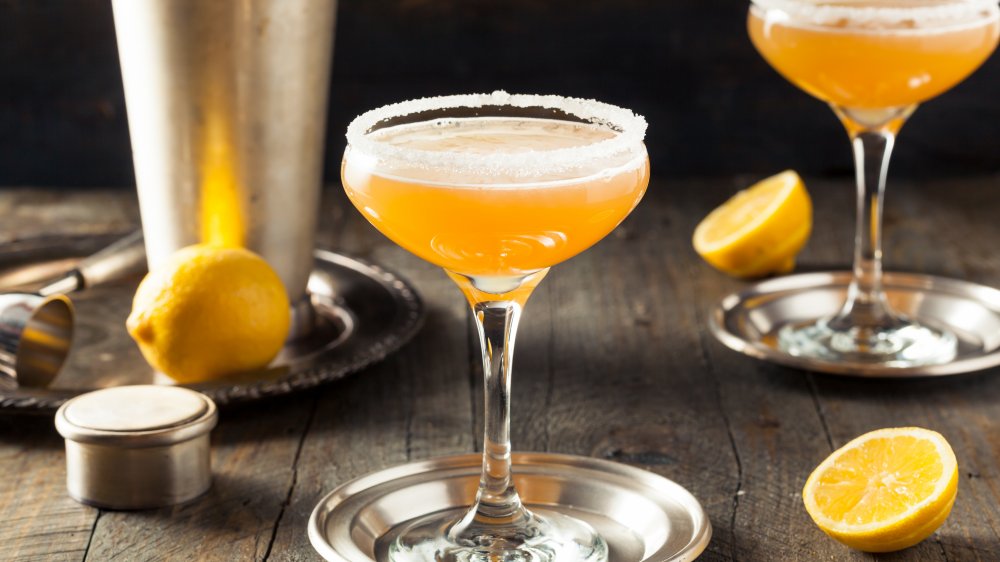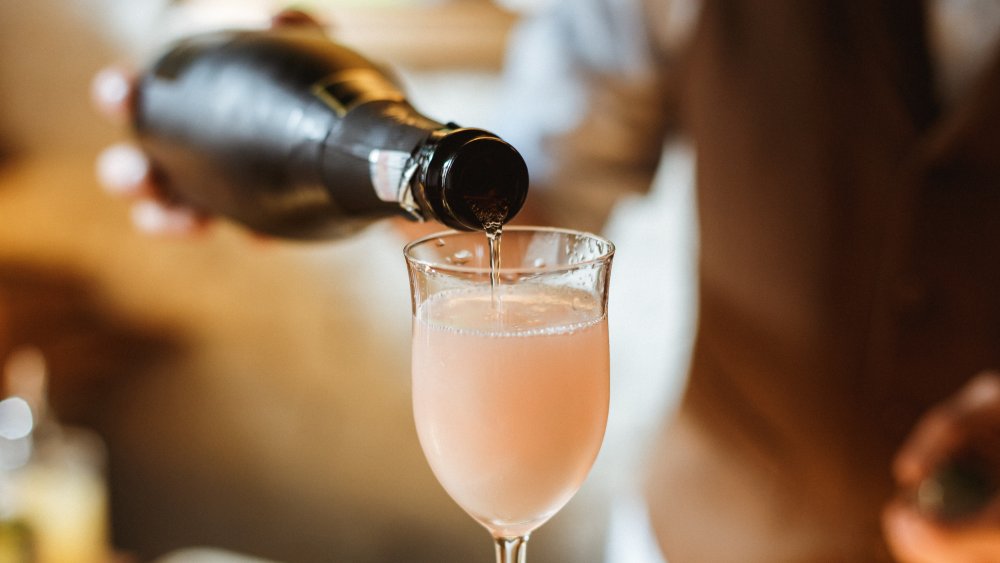Vintage Cocktails That Deserve A Comeback
We may receive a commission on purchases made from links.
Every year — no, every season — sees a new crop of cocktails, as each top bartender seems to want to put their own spin on the "big six" base liquors (these being brandy, gin, rum, tequila, vodka, and whiskey) while beverage manufacturers seek to drum up demand for the ones they've just dreamed up like pumpkin spice whiskey or Cinnabon vodka.
Still, how many of these drinks actually stand the test of time? Most likely not the super-complicated ones calling for 1/8 of an egg white, three drops of homemade açaí bitters, 67/69th of an ounce of cardamom-infused caipirinha, and half a pickled herring. These convoluted cocktails are quickly forgotten, and deservedly so.
But there are a number of vintage drinks that have fallen out of favor, dismissed, perhaps, as too old-fashioned. While the cocktail of that name staged a comeback thanks to Don Draper, we think these retro cocktails are overdue for their own revival.
Pink Squirrel
This rosy-hued drink is not the cocktail that made Milwaukee famous, but it was invented in this beer-drinking, blue-collar town. Bryant's, Brew City's oldest cocktail bar, is still serving up one-of-a-kind cocktails in a dimly lit lounge on the south side. While the restaurant's bartenders boast a repertoire of some 450+ drinks, they have never offered a menu, as they feel that limits customer choice. Still, they do offer a small selection of drinks you can order by name, including their signature Pink Squirrel.
An Affair from the Heart says this sweet libation was popular with the ladies back in the '50s (much like Elvis), but they suggest that it makes a perfect couple's dessert for Valentine's Day. Their recipe calls for ice cream, as does Bryant's version — Travel Wisconsin says that ice cream drinks, the predecessor to adult milkshakes, have long been a part of the state's supper club culture — although some versions call for it to be made with cream instead.
To make a pink squirrel, blend two scoops of vanilla ice cream with one ounce of white crème de cacao and one ounce of crème de noyaux, an almond-flavored liqueur that gives the drink its pretty color. Pour into a glass (a hurricane glass would be nice, or maybe a champagne coupe) and garnish with whipped cream and a cherry — and perhaps a little pink paper parasol.
Brandy Alexander
The Brandy Alexander, which John Lennon claimed as his favorite cocktail, has somewhat mysterious origins. Bar & Restaurant provides several different backstories claiming the Alexander (which was originally made with gin) was named after either a Russian tsar, a British princess, or an American theater critic, although the most likely explanation is that it was named for the turn-of-the (last) century bartender who came up with this concoction.
If you have crème de cacao leftover from making those Pink Squirrels, you can always use it to blend up a batch of Brandy Alexanders, too. This is another dessert-type drink that can be made with either cream or ice cream, although it's a tad stronger than the Pink Squirrel, as it features brandy rather than getting its entire booze content from lower-alcohol liqueurs. To make a Brandy Alexander, a drink which Liquor.com says was originally known as Alexander #2 back when the gin ones were still popular, mix an ounce and a half of cognac, an ounce of crème de cacao (either dark or white will do because the brandy already lends the drink a brown hue), and an ounce of cream. Shake over ice, strain, and garnish with a sprinkle of grated nutmeg.
Oh, and this drink also has its own literary cameo, as Anthony Blanche orders this drink for a reluctant Charles Ryder in "Brideshead Revisited." As Blanche said as he drank both his and Charles' cocktails, "Yum-yum ... down the red lane they go."
Gin Rickey
Had enough cream drink recipes? Then you may want to try this drink named after a 19th-century man who preferred his cocktails sugar-free. As there was no such thing as Diet Coke at the time, Liquor.com relates how Democratic lobbyist Joe Rickey lobbied the bartender at his favorite D.C. watering hole to build him a drink made with nothing more than bourbon, soda water, and lime. In time, the idea caught on, and people began ordering "Rickeys" made with all different types of liquor.
The gin version, besides being the most popular, is also a footnote in literary history. It was a favorite of the notoriously non-abstemious novelist F. Scott Fitzgerald, and was also enjoyed by his most famous character, Jay "The Great" Gatsby. American Pulps says you make it by mixing two ounces of gin with ¾ ounce of lime juice and then topping up your glass with soda water. The article also says it's somewhat similar to a gin and tonic, only without the tonic water.
Sidecar
The first published recipe for the sidecar appears in 1919 in a book called "Harry's ABC of Mixing Cocktails," authored by Harry MacElhone. He was the Harry from Harry's New York Bar in Paris, a drinking spot that was favored by F. Scott Fitzgerald ("F. Scott drank here" is kind of the dipsomaniac's version of "George Washington slept here"), Ernest Hemingway, and even a teenage James Bond.
According to creator Ian Fleming, Bond started out at Harry's on a memorable night that "culminat[ed] in the loss, almost simultaneous, of his virginity and his note-case" (via For Your Eyes Only). While Bond probably stuck to his preferred shaken-not-stirred vodka martinis, Atlas Obscura says the bar is known for inventing a few other classic drinks, too, including the Bloody Mary and the French 75.
The sidecar is said to get its name from a motorcycle attachment used as troop and weapons transport during WWI, and it is possible that the drink was first created as part of an Armistice Day celebration. Harry's original version called for equal parts of the drink's three ingredients, those being cognac, the orange liqueur Cointreau, and fresh lemon juice. The Tasting Room says that version is now known as "French school," but there's also now an "English school" calling for two parts of cognac to one part of each of the remaining ingredients.
French 75
Yet another WWI-themed drink is the previously-mentioned French 75. Said to be another Harry MacElhone creation, Atlas Obscura says the French 75 was christened for its effect as MacElhone compared drinking one of these to being hit by a French 75 mm artillery shell. The drink dates back to World War I, although the New Orleans Bar Association's claim that it was consumed by doughboys before they went into battle seems a bit dubious. Still, the US World War One Centennial Commission does confirm the surprising fact that the French National Assembly voted to send Champagne to the troops and to military hospitals on a regular basis to serve as a morale booster.
Champagne is one of the French 75's main ingredients, as are gin, sugar, and lemon juice. A recipe published in the 1930 "Savoy Cocktail Book" calls for two parts of gin to one of lemon juice, a spoonful of powdered sugar, and Champagne to fill a tall glass. Arnaud's French 75 Bar in New Orleans, however, makes the drink from which they took their name with cognac rather than gin. A fitting choice, as cognac is more of a French thing than the Brits' favorite tipple, gin. Their recipe calls for 1 1/4 ounces of cognac, 1/4 ounce simple syrup, and 1/4 ounce fresh lemon juice, shaken over ice and strained into a Champagne flute. Top the glass off with Champagne, garnish with a twist of lemon peel, and oh là là! Vive le verre!
